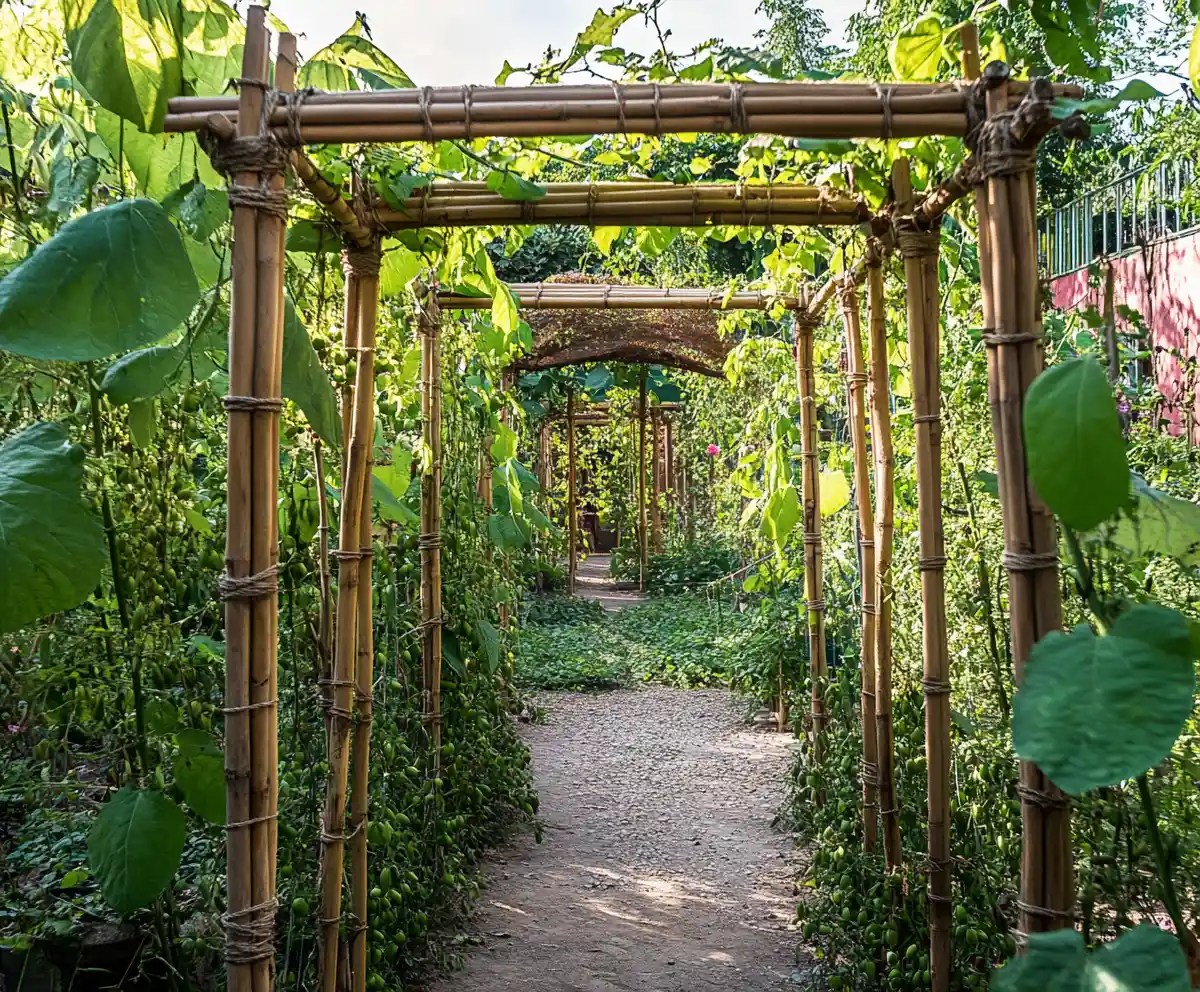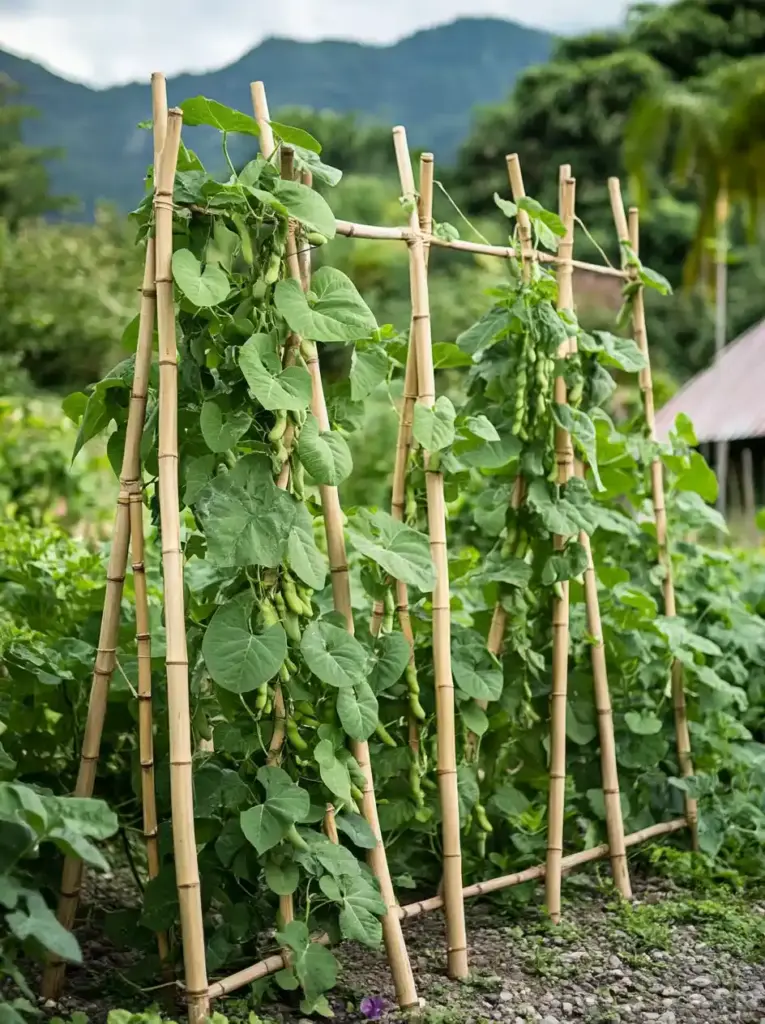If you’re looking to grow healthier, more productive cucumbers this season, these DIY cucumber trellis ideas are exactly what your garden needs. Whether you’re working with a small urban plot or a sprawling backyard, a cucumber trellis can make a huge difference. It not only supports your climbing vines but also helps prevent pests, improve airflow, and save valuable space. In this guide, we’ll explore 15 creative cucumber trellis ideas that are easy to build, budget-friendly, and perfect for gardeners of all skill levels.
1. Bamboo Cucumber Trellis
Best for: Lightweight, eco-friendly, and flexible garden designs.
Bamboo is a favorite among gardeners for a reason—it’s strong, sustainable, and easy to work with. A bamboo cucumber trellis can be assembled in an A-frame shape or leaned against a wall or fence for support. Use garden twine or jute string to crisscross between poles, giving cucumber vines a stable path to climb.
How to build it:
- Use six bamboo poles (3 per side) and secure the tops together to form an A-frame.
- Wrap jute twine horizontally and vertically between the poles.
- Anchor the frame in the soil or raised bed for stability.
Pro Tip: Bamboo weathers well, but securing the joints tightly ensures your trellis stands strong all season.
2. DIY Wood and String Trellis
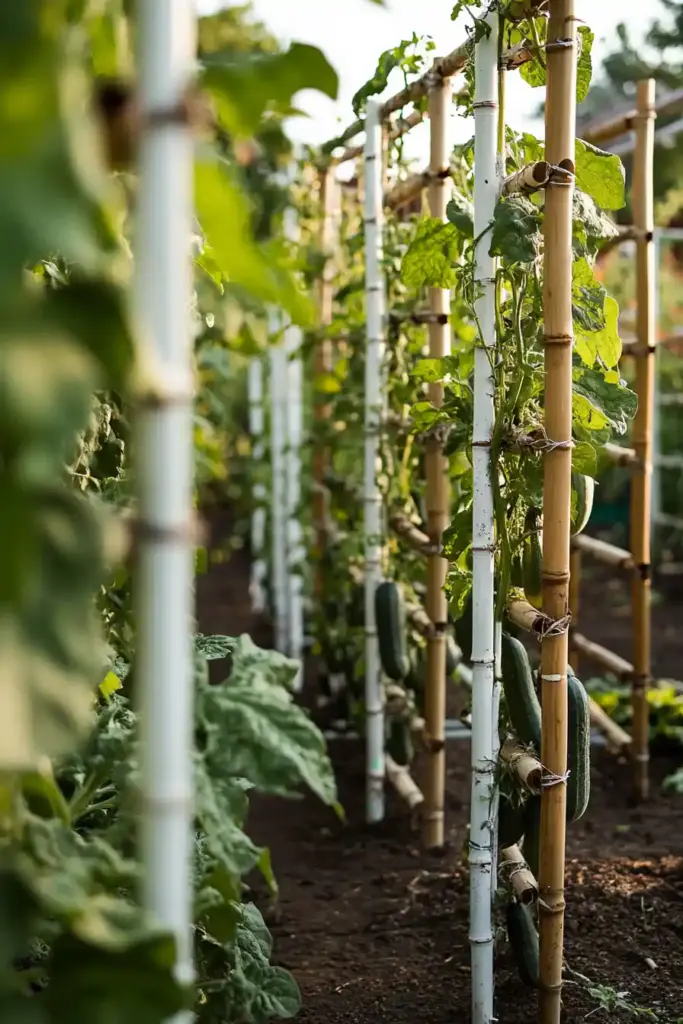
Best for: A tidy, structured look in raised beds or along fences.
If you prefer a more structured look in your garden, a wood and string trellis is a stylish and sturdy option. Using basic 1×2 or 2×2 wooden posts and garden twine, you can build a simple grid that blends form and function.
Materials needed:
- Two vertical wooden stakes (around 5–6 feet tall)
- Garden twine or nylon string
- A few screws or a staple gun to secure the twine
Assembly steps:
- Install the wooden posts into the soil or garden bed.
- Tie or staple the twine in horizontal rows spaced 4–6 inches apart.
- Guide cucumber tendrils onto the twine as they grow.
3. Pallet Cucumber Trellis
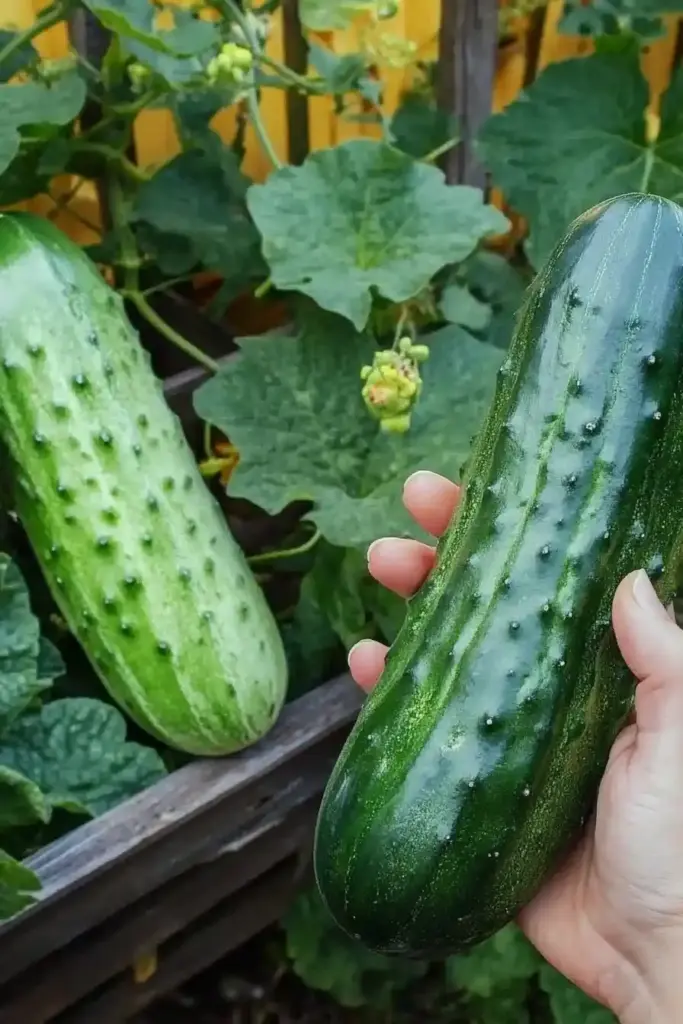
Best for: Repurposing old materials with a rustic vibe.
Old pallets can be upcycled into a budget-friendly cucumber trellis that’s perfect for small gardens or container setups. Lean it upright or at a slight angle, and your cucumber vines will naturally weave through the slats.
Steps to make one:
- Find a heat-treated pallet (look for the “HT” stamp).
- Support it with two wooden stakes to keep it upright.
- Place it near your cucumber seedlings and train the vines to climb.
Safety tip: Always avoid chemically-treated pallets marked with “MB” (methyl bromide), as they’re not safe for garden use.
4. Teepee Garden Trellis
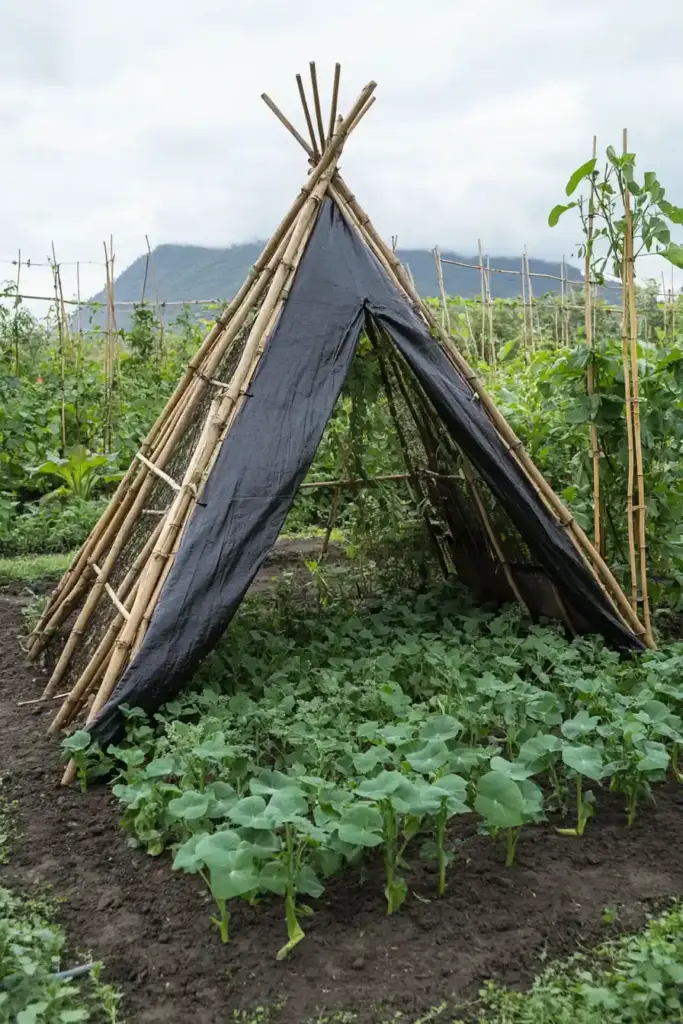
Best for: Maximizing planting space in circular beds.
The teepee trellis is an old-school favorite that’s still wildly effective today. It’s made by tying long poles together at the top, forming a cone shape. This design allows for great vertical growth and air circulation.
Materials:
- 4 to 6 long poles (bamboo, wood, or metal)
- Garden twine or zip ties
Quick assembly:
- Arrange the poles in a circle and tie them together at the top.
- Wrap twine around the poles in a spiral or web pattern for vine support.
This design is ideal for planting cucumbers around the base of the structure—space-efficient and visually striking!
5. Hardware Fence Panel Trellis
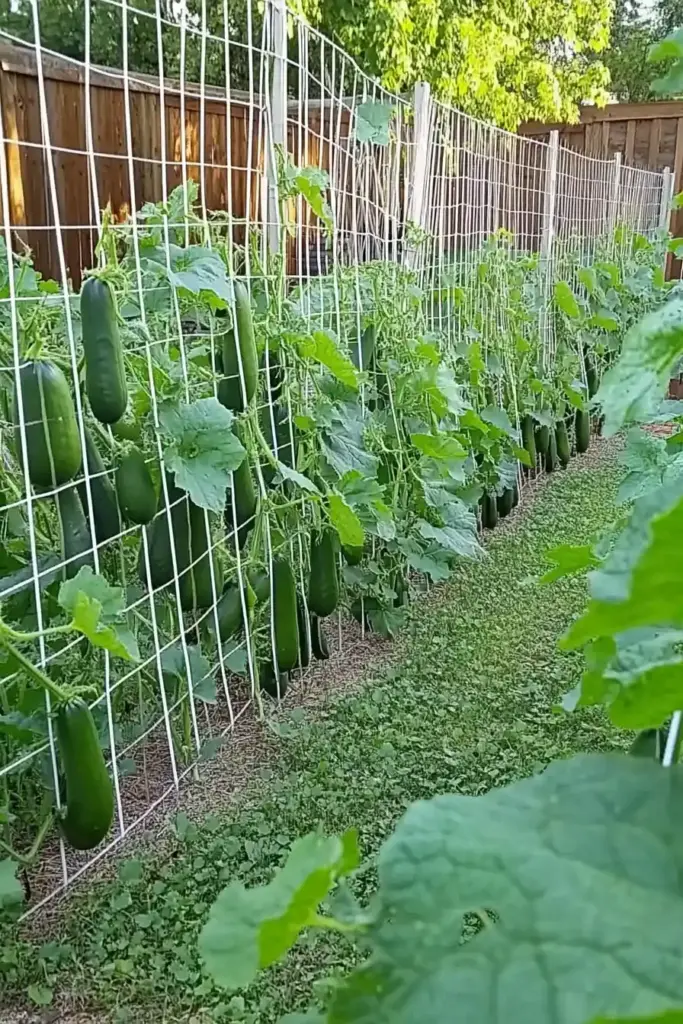
Best for: Heavy-duty support and long-term use.
If you’re looking for something truly durable, hardware fencing panels (like chicken wire, cattle panel, or welded wire) are excellent choices. These can be shaped into A-frames, arches, or flat wall-style trellises depending on your garden’s needs.
How to build:
- Cut the panel to your desired size.
- Secure it between two wooden posts or create a foldable A-frame with hinges.
- Train your cucumber vines to climb the grid.
Why it works: Metal fencing provides solid grip points for tendrils and won’t sag under the weight of heavy fruit.
6. Post and Twine DIY Trellis
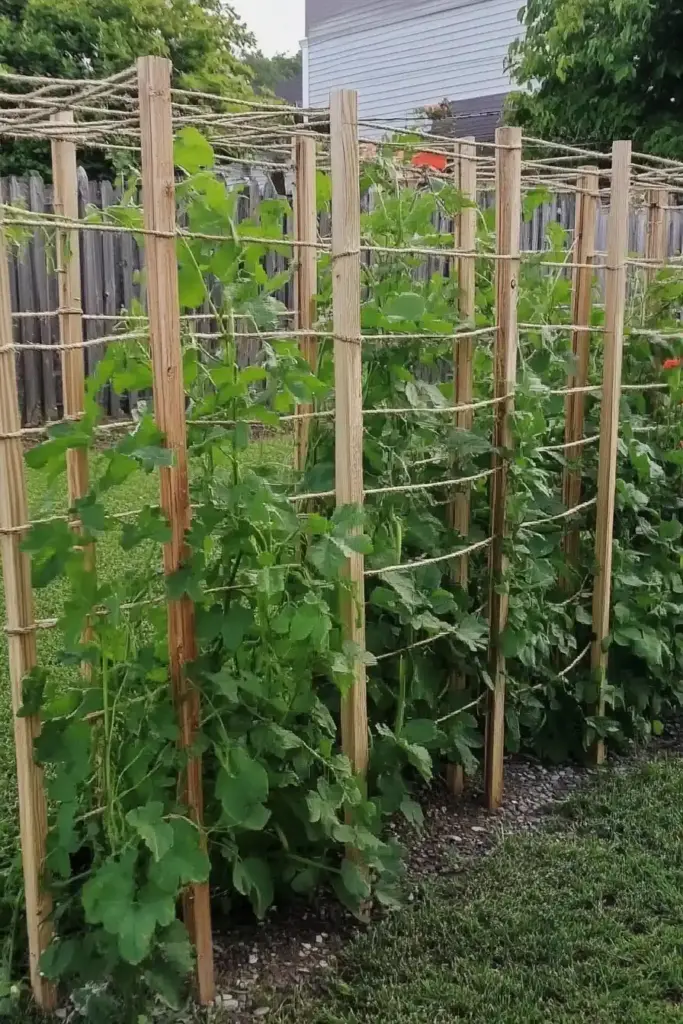
Best for: Simple construction and flexible sizing.
This DIY cucumber trellis uses a few vertical posts and lines of garden twine, creating a minimalist yet effective support system. It’s especially great for row gardens and raised beds where you want to maximize linear space.
Here’s how to do it:
- Install two tall wooden or metal posts about 4–6 feet apart.
- Stretch garden twine horizontally between them, spaced 6 inches apart.
- You can also run a vertical line of twine from top to bottom to create a grid.
Bonus: This design also works well for peas, beans, and other climbing veggies—making it a versatile investment in your garden.
7. V-Shaped Post and Twine Garden Trellis
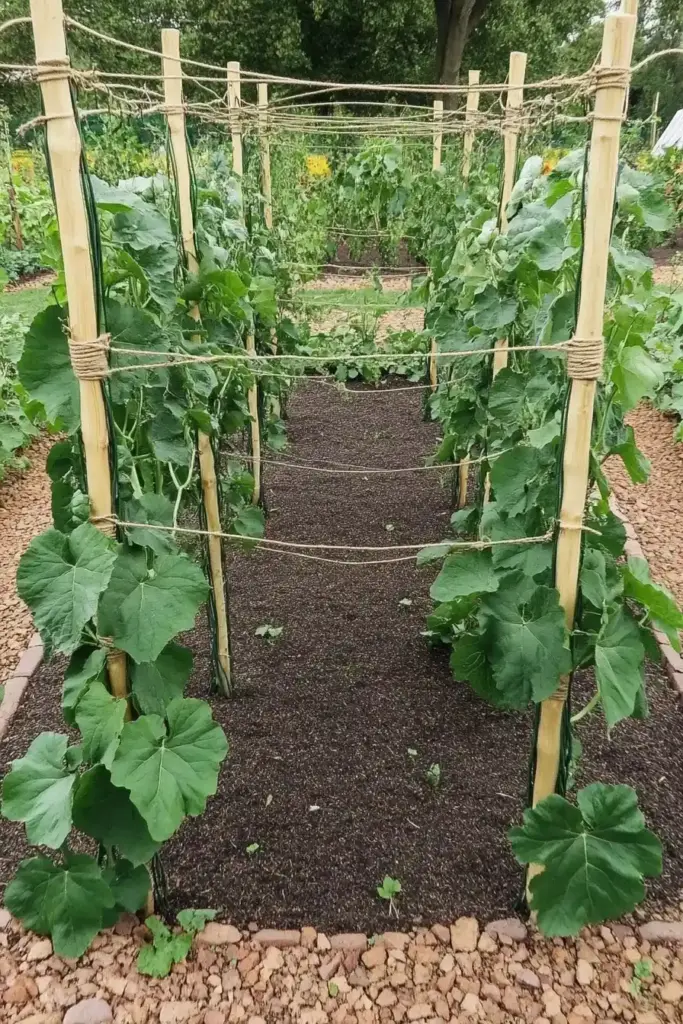
Best for: Creative gardeners who want optimal airflow and sunlight exposure.
This variation takes the post-and-twine idea to the next level. By leaning two sets of posts outward to form a “V” shape, you create a unique tunnel-like structure that encourages vertical growth and makes harvesting easier.
Steps to build:
- Place posts on opposite sides of your garden bed, angling them outward.
- Tie twine between opposing posts to form diagonal lines or a web pattern.
- Plant your cucumbers in the center—vines will grow up and fruit will hang on the outer sides.
Garden win: This design creates a shady interior space beneath the vines, perfect for growing shade-loving herbs like mint or cilantro.
8. DIY A-Frame Trellis
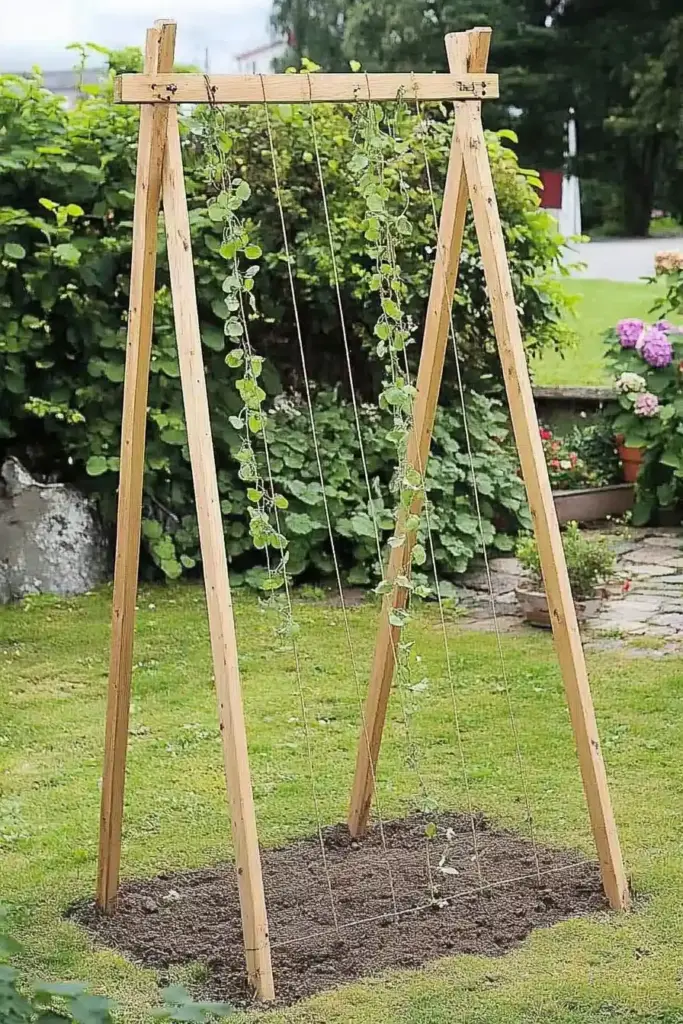
Best for: Foldable design and multi-plant use.
The A-frame trellis is one of the most versatile cucumber support structures. It folds flat for storage in the off-season and offers strong support for heavier crops like cucumbers, tomatoes, or beans.
Build instructions:
- Construct two rectangular wooden frames and hinge them together at the top.
- Stretch netting, chicken wire, or twine across the frame to create a climbing surface.
- Anchor it firmly in place.
Tip: Paint or seal the wood to protect it from moisture and extend its lifespan.
9. Wood Panel Garden Trellis
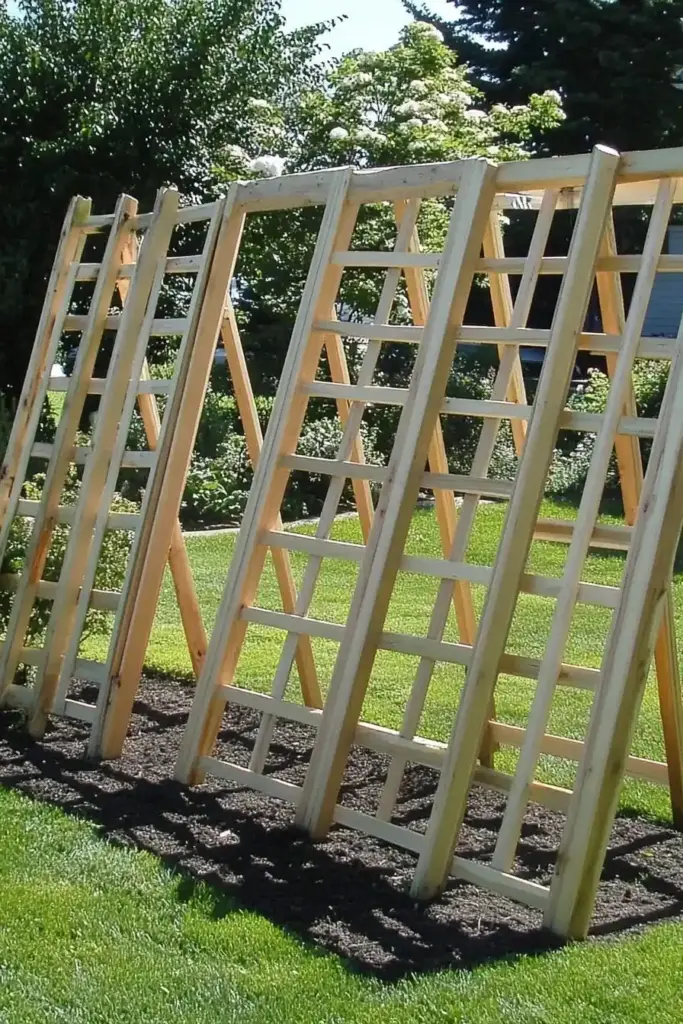
Best for: Permanent garden beds or decorative vegetable patches.
Wooden panels offer a solid and stylish way to support cucumber vines. These are ideal for gardeners who want something a bit more refined and integrated into a permanent layout.
How to build:
- Use horizontal or lattice wood panels supported by sturdy posts.
- Install them directly in raised beds or along walkways.
- Vines can be gently tied and trained as they grow upward.
Good to know: These panels can double as privacy screens or section dividers in larger gardens.
10. Bamboo Ladder Trellis
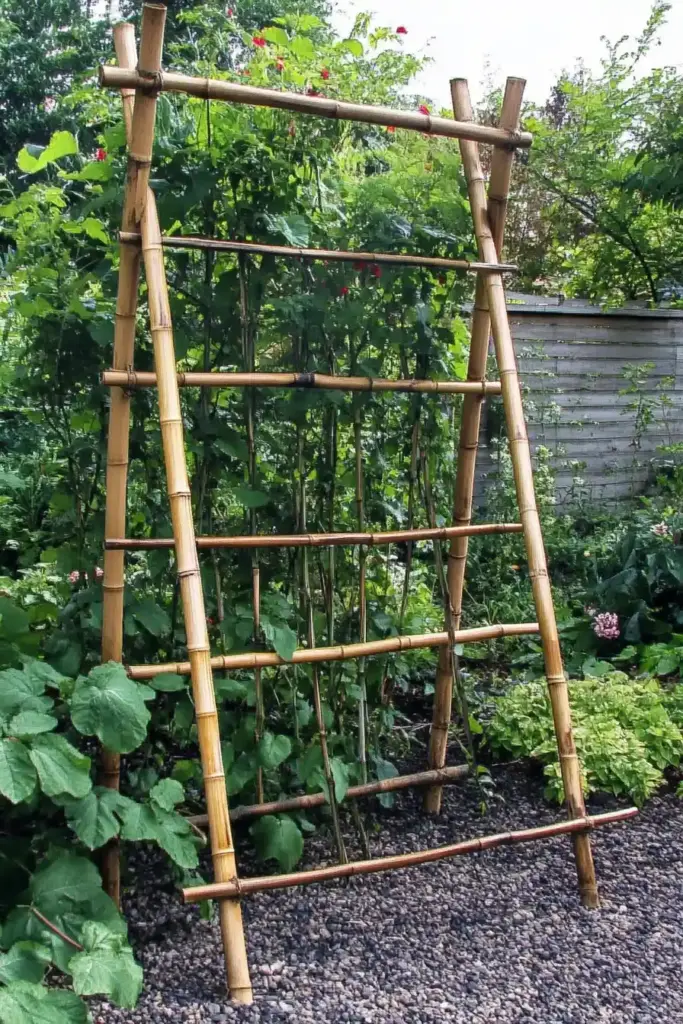
Best for: Natural, rustic gardens with minimal tools required.
This design uses bamboo poles or thick branches arranged like a ladder—simple, charming, and functional. It’s a great way to add some earthy appeal while giving cucumbers a solid framework to climb.
Assembly tips:
- Build two vertical bamboo sides.
- Tie horizontal rungs every 6–8 inches using garden twine.
- Lean the structure against a wall or use it as a freestanding trellis.
Bonus: Bamboo is naturally pest-resistant and biodegradable, making it a smart choice for sustainable gardeners.
11. Wood and PVC Cucumber Trellis
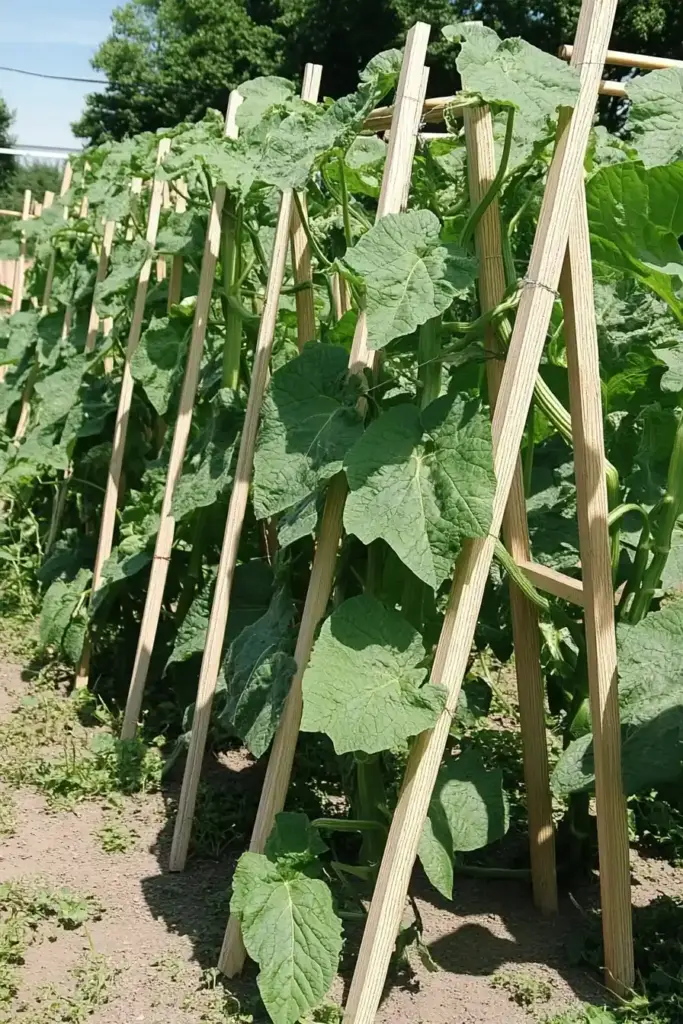
Best for: Lightweight, weather-resistant, and semi-permanent setups.
Combine the sturdiness of wood with the flexibility of PVC pipes for a long-lasting cucumber trellis that stands up well to the elements. This design typically forms an A-frame and uses nylon netting or mesh for the climbing surface.
How to make it:
- Build a wooden frame for the sides using 1x2s or 2x2s.
- Cut PVC pipes for the top and sides, and secure with screws or brackets.
- Stretch plant netting across the frame and anchor it tightly.
Tip: Paint the PVC with UV-resistant spray paint to prevent sun damage and extend the trellis’s life.
12. Trellis Fence 2-in-1
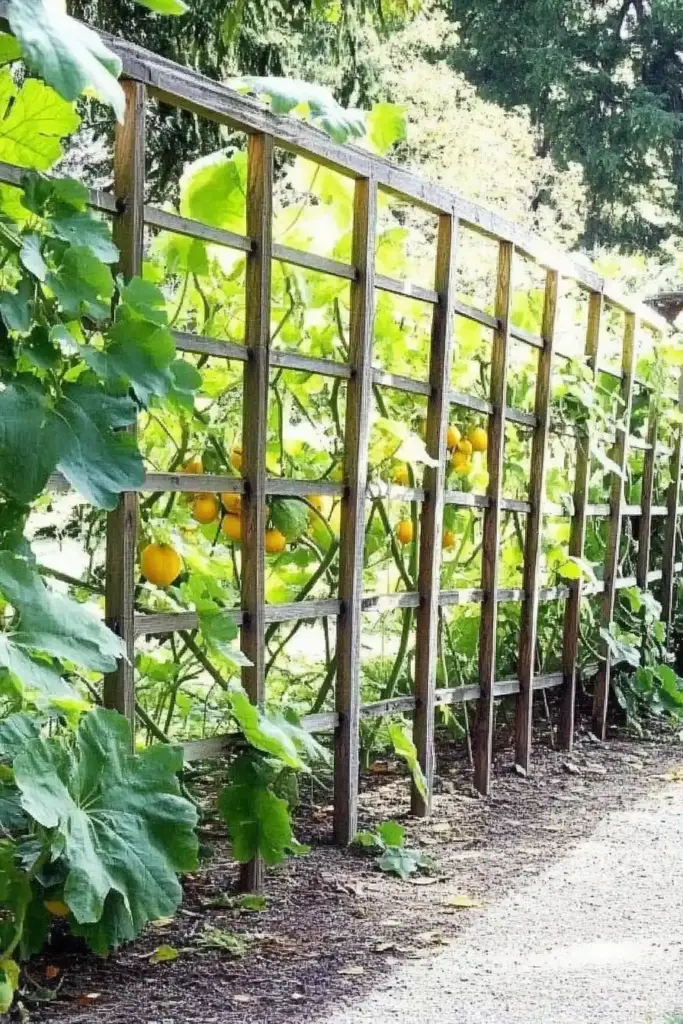
Best for: Maximizing garden space while creating boundaries.
This dual-purpose structure functions as both a fence and cucumber trellis—perfect for defining your garden’s edge while supporting climbing vegetables.
How to build:
- Install vertical fence posts with horizontal wooden slats or wire mesh.
- Train cucumbers to grow upward, using twine to guide them.
- Optional: Add a gate or decorative trim for extra style.
Bonus: This setup works great for companion planting—grow cucumbers on one side, and flowering pollinators like nasturtiums or marigolds on the other.
13. Free-Standing Trellis Screen
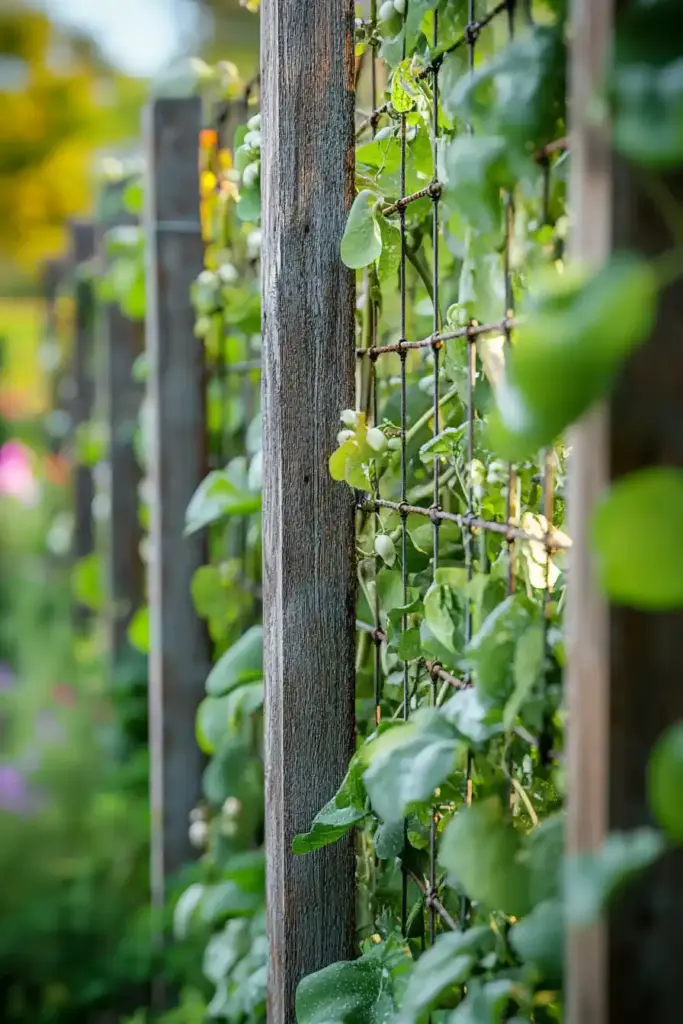
Best for: Raised beds or container gardens that need vertical support.
This is essentially a framed screen made with 2x4s and plant netting, built to stand independently behind or inside a raised bed. It’s lightweight, easy to move, and highly effective for vertical gardening.
Assembly guide:
- Create a rectangular wood frame (around 5–6 feet tall).
- Stretch nylon garden netting or twine in a grid pattern.
- Secure with screws or a staple gun, then place it behind your cucumber plants.
Pro Tip: This is an ideal trellis for tight spaces or patios where you want structure without permanence.
14. Arch Garden Trellis Ideas
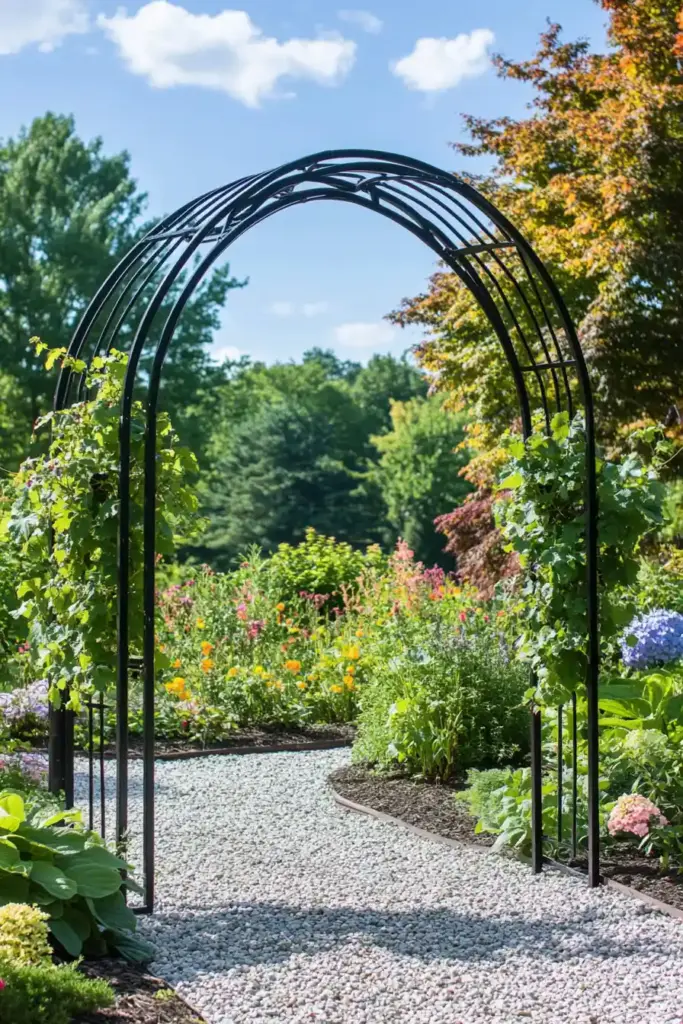
Best for: A decorative touch in edible landscapes.
Garden arches aren’t just for flowers—they make stunning cucumber tunnels too. Create a beautiful green canopy that turns your veggie patch into a magical space.
How to build:
- Use metal arches or flexible PVC piping to form the curved structure.
- Cover with mesh, cattle panel, or chicken wire.
- Train cucumbers upward and over for an immersive garden experience.
Why it’s great: Cucumber fruits hang neatly underneath the arch, making harvests easy and picturesque.
15. Tomato Cage Trellis for Cucumbers

Best for: Gardeners short on time or space.
If you need a no-fuss solution, repurpose tomato cages as a quick cucumber trellis. They’re lightweight, portable, and provide enough vertical space for small to medium cucumber varieties.
How to use it:
- Place one cage over each plant.
- Use twine to tie wandering vines back toward the center.
- Optionally add a second cage on top to increase height.
Quick fix: You can DIY your own cage using hardware cloth or wire fencing if you need a custom size.
🌟 Conclusion: Grow Smarter with the Right Cucumber Trellis
Choosing the right DIY cucumber trellis not only improves plant health and yields but also transforms your garden into a more organized, beautiful space. From rustic bamboo frames to space-saving vertical screens and elegant garden arches, there’s a trellis idea here for every gardener and garden size.
Whether you’re working with a balcony planter or a full backyard bed, these 15 easy cucumber trellis ideas will help you grow more with less space, minimize pests, and make harvesting a breeze.
Start simple, experiment with styles, and let your garden grow upward in both function and charm.

